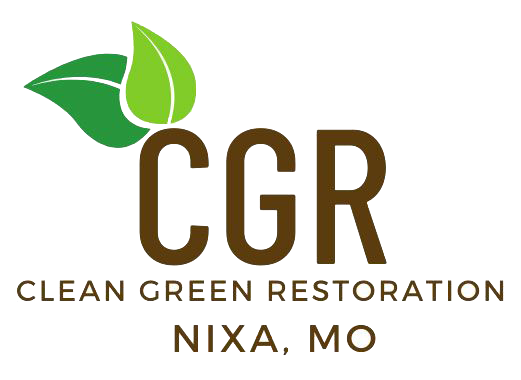FAQs
Clean Green Restoration
Why is smoke residue just as dangerous as the flames of a fire?
Smoke residue, or soot, is a hazardous byproduct of incomplete combustion. It contains harmful substances like carbon monoxide, benzene, formaldehyde, and heavy metals. Exposure can lead to various health issues, including respiratory problems and skin irritation. Beyond health concerns, smoke residue can cause property damage through discoloration, corrosion, and persistent odors. Additionally, water used in firefighting efforts often necessitates water damage repairs, compounding the overall damage to a property.What does CGR do to be more eco-friendly when it comes to fire restoration?
Clean Green Restoration prioritizes environmental responsibility in fire restoration. We utilize eco-friendly products and equipment that are safe for both people and the environment. During water damage repairs and other restoration processes, we implement recycling practices for removed materials to minimize our environmental impact.What is fire damage restoration?
Fire damage restoration is a comprehensive process that involves cleaning and rebuilding a property after a fire incident. Once hazardous materials are removed, restoration experts begin necessary work, including water damage repairs, to restore the property to its pre-fire condition.What should I do after a water damage event?
After a water damage event, prioritize safety for yourself and others. Avoid areas with standing water or electrical hazards. If necessary, turn off the main water supply and electricity. Contact a plumber for any required plumbing repairs. Then, reach out to a professional water damage restoration company like Clean Green Restoration for a prompt inspection. We will assess the damage and initiate the restoration process. Depending on the extent of damage, you may need to file a claim with your insurance provider.Does insurance cover water damage restoration?
Most homeowners' insurance policies include coverage for water damage restoration and repairs. However, coverage can vary based on specific policy terms and conditions. Some policies may have limitations or exclusions for certain types of damage or expenses. It's advisable to review your policy carefully and contact your insurance company promptly after a water damage event to file a claim and obtain an estimate.How do I know when my property is completely dry?
During the drying process for water damage repairs, Clean Green Restoration employs advanced tools such as moisture meters and thermal imaging cameras. These devices measure the moisture content in materials and air humidity levels. We ensure all materials reach industry-standard dryness before removing drying equipment. Throughout this process, we conduct regular monitoring visits, documenting readings and adjusting equipment as necessary.How long will the restoration process take?
The duration of the restoration process varies based on the extent of damage. From our experience, a simple water loss may be resolved in less than a week, while more complex cases could require up to two weeks for mitigation. Completing repairs to restore the property to its pre-loss condition, including any necessary mold removal services, can span from weeks to months, depending on the severity of the damage. Clean Green Restoration will provide a detailed timeline to help you understand the process ahead.What are the early signs of mold damage?
Early indications of mold growth can be both visual and olfactory. Mold typically develops in environments with excessive moisture. According to industry sources, indoor humidity levels exceeding 45% can create conditions conducive to mold formation. Mold can grow on various surfaces and often produces a musty or damp odor. If you notice these signs, it's advisable to seek professional mold removal services to address the issue and prevent further damage.Can I treat mold damage on my own?
While minor mold issues can potentially be addressed independently, it's always advisable to seek a professional assessment. Clean Green Restoration offers expert inspections for any mold concerns and provides professional mold removal services when necessary.How does Clean Green Restoration treat mold eco-consciously?
Clean Green Restoration adheres to the IICRC standard for mold remediation and removal services. We collaborate with local hygienists and indoor environmental professionals to ensure our remediation process is both effective and environmentally responsible.
